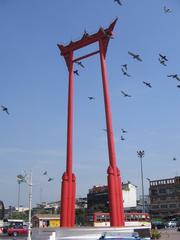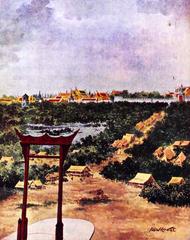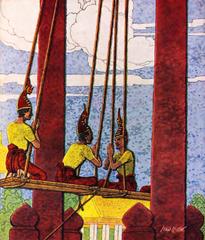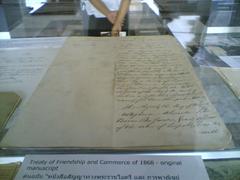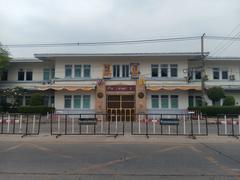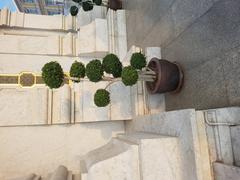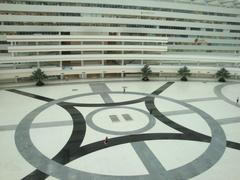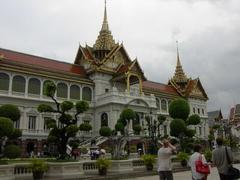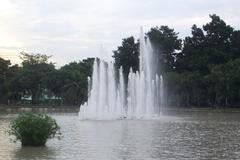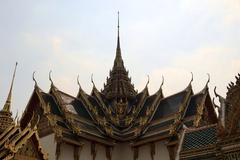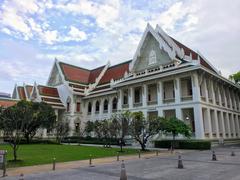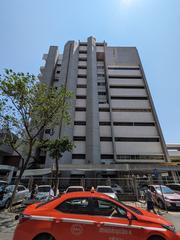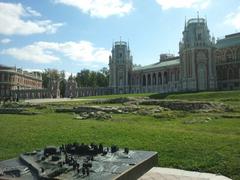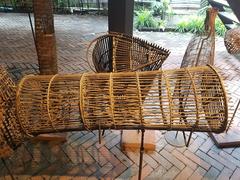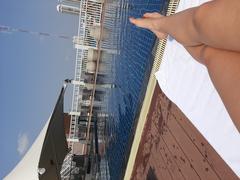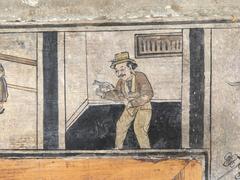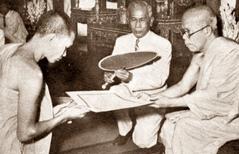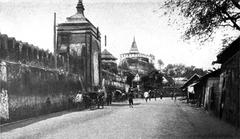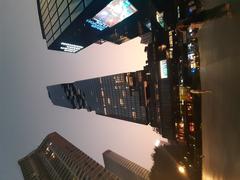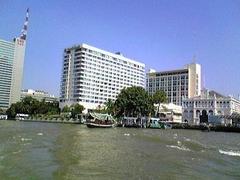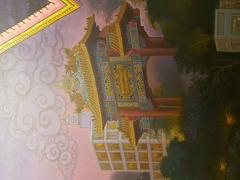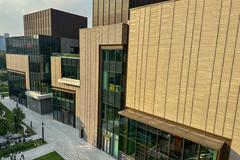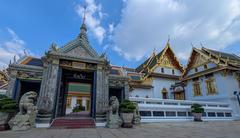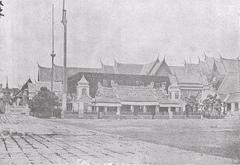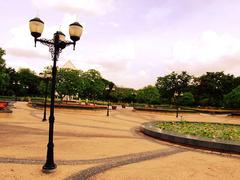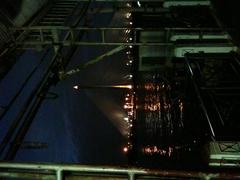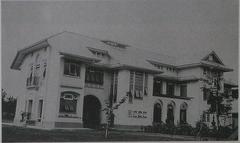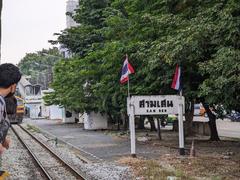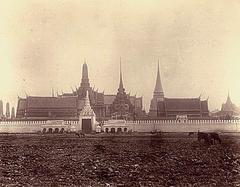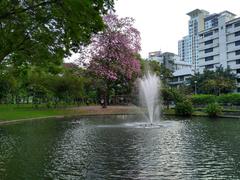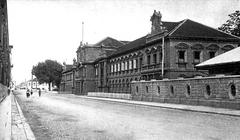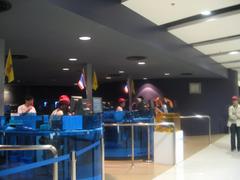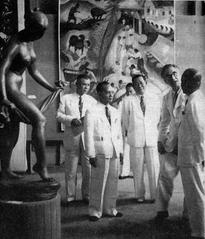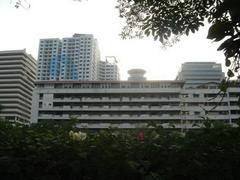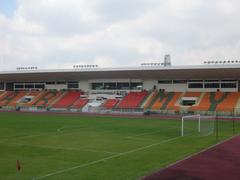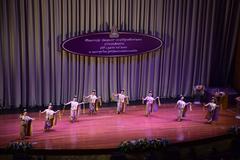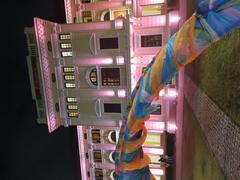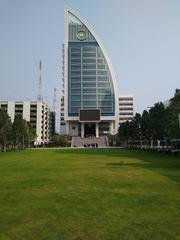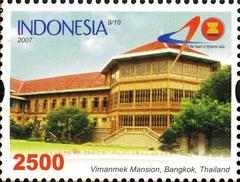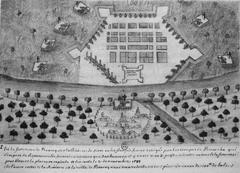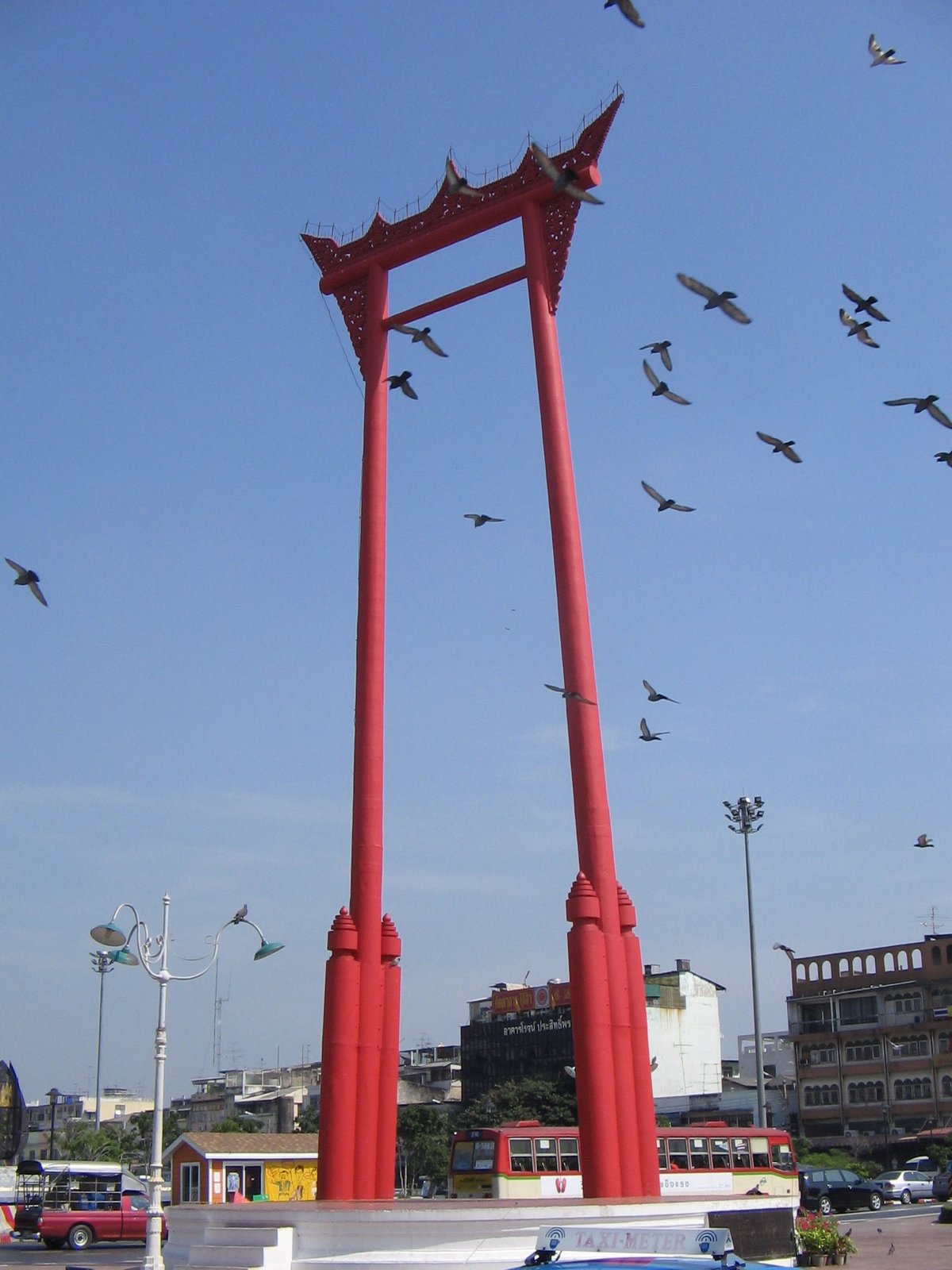
Visiting Giant Swing Bangkok Complete Guide
Date: 23/07/2024
Introduction
The Giant Swing, or เสาชิงช้า (Sao Chingcha), stands as one of Bangkok’s most iconic historical landmarks. Located in the heart of the city, this towering structure is not only a marvel of traditional Thai architecture but also a symbol of Bangkok’s rich cultural and religious heritage. Constructed in 1784 during the reign of King Rama I, the Giant Swing was originally designed for the annual Brahmin Swing Ceremony, which honored the Hindu god Shiva. This sacred observance involved participants swinging to great heights to grab a bag of silver coins with their teeth, symbolizing the mythical churning of the ocean to obtain the nectar of immortality. Although the ceremony was discontinued in the 1930s due to safety concerns, the Giant Swing remains a focal point of religious and cultural activities, drawing visitors from around the world (Bangkok Post) (Tourism Authority of Thailand).
Beyond its historical and religious significance, the Giant Swing is a testament to the craftsmanship of its creators. The structure, made of teak wood and standing at an impressive height of 21.15 meters, has undergone several renovations to preserve its grandeur. Major renovations were carried out in 1920, 1959, and most recently in 2005, when the original teak wood was replaced with new timber from Phrae Province. This continuous effort to maintain the Giant Swing underscores its importance as a cultural landmark (Bangkok Metropolitan Administration).
Today, the Giant Swing is a popular tourist attraction, easily accessible by public transportation and surrounded by other significant sites such as Wat Suthat, Bangkok City Hall, and the Democracy Monument. Visitors are drawn not only by the swing’s historical allure but also by the vibrant local community and the array of nearby attractions. Whether you’re a history enthusiast, a cultural explorer, or simply a traveler seeking unique experiences, the Giant Swing offers a multifaceted glimpse into Bangkok’s storied past and dynamic present.
Table of Contents
- Introduction
- History and Construction
- Religious Significance
- Architectural Features
- Historical Events and Renovations
- Visiting Information
- Cultural Impact
- Modern-Day Relevance
- Preservation Efforts
- FAQ
- Conclusion
History and Construction
The Giant Swing was constructed in 1784 during the reign of King Rama I, the founder of the Chakri Dynasty. Made of teak wood, the swing stands at an impressive height of 21.15 meters (approximately 69 feet) (Bangkok Post).
Religious Significance
The Giant Swing was used in the Brahmin ceremony to honor the Hindu god Shiva. Participants would swing to great heights to grab a bag of silver coins placed on a pole, symbolizing the mythical churning of the ocean to obtain the nectar of immortality. This ceremony was a grand event, attracting large crowds and even the attention of the royal family (Tourism Authority of Thailand).
Architectural Features
The Giant Swing consists of two towering red pillars connected by a crossbar. The pillars are intricately carved with traditional Thai motifs and painted in a striking red color, symbolizing prosperity and good fortune. The swing’s design is both aesthetically pleasing and structurally sound, having withstood the test of time for over two centuries (Bangkok Metropolitan Administration).
Historical Events and Renovations
The Giant Swing has undergone several renovations to preserve its structural integrity. Major renovations occurred in 1920, 1959, and most recently in 2005 when the original teak wood was replaced with new timber from Phrae Province. This renovation was part of a larger effort to preserve Bangkok’s historical landmarks, completed in time for the 60th anniversary of King Bhumibol Adulyadej’s accession to the throne (Bangkok Post).
Visiting Information
Visiting Hours and Tickets
The Giant Swing is located in the Phra Nakhon district of Bangkok, near the Wat Suthat temple. It is a public monument and can be visited at any time without an entrance fee. However, the nearby Wat Suthat temple has specific visiting hours and ticket prices, which you might want to check.
Travel Tips
The site is easily accessible by public transportation, including buses and the MRT subway. The best time to visit is during the cooler months from November to February, when the weather is more pleasant for outdoor activities. Make sure to wear comfortable shoes as you’ll likely be doing a lot of walking.
Nearby Attractions
While visiting the Giant Swing, don’t miss other nearby historical and cultural attractions such as Wat Suthat, Bangkok City Hall, and the Democracy Monument. These sites offer a deeper understanding of Bangkok’s rich heritage.
Cultural Impact
The Giant Swing has been featured in numerous works of art, literature, and film, symbolizing Bangkok’s rich cultural heritage. It is also a popular tourist attraction, drawing visitors from around the world who come to marvel at its grandeur and learn about its historical significance. The swing has become a symbol of Bangkok, representing the city’s blend of tradition and modernity (Tourism Authority of Thailand).
Modern-Day Relevance
Today, while the Swing Ceremony is no longer performed, the Giant Swing remains a focal point for religious and cultural activities. It is often included in city tours and is a must-visit for anyone interested in Thai history and culture. The swing’s location near other significant landmarks makes it an essential part of any comprehensive tour of Bangkok (Bangkok Metropolitan Administration).
Preservation Efforts
Preservation of the Giant Swing is a priority for both the local government and cultural organizations. Efforts are made to maintain the structure and educate the public about its historical and cultural significance. The Bangkok Metropolitan Administration has implemented various measures to protect the swing from environmental damage and vandalism, including regular inspections and maintenance work (Bangkok Post).
FAQ
Q: What are the visiting hours for Sao Chingcha? A: Sao Chingcha is a public monument and can be visited at any time.
Q: Is there an entrance fee for Sao Chingcha? A: No, there is no entrance fee for visiting Sao Chingcha. However, nearby Wat Suthat temple does have an entrance fee.
Q: How can I get to Sao Chingcha? A: The site is easily accessible by public transportation, including buses and the MRT subway.
Q: What are some nearby attractions? A: Nearby attractions include Wat Suthat, Bangkok City Hall, and the Democracy Monument.
Q: When is the best time to visit Sao Chingcha? A: The best time to visit is during the cooler months from November to February.
Conclusion
The Giant Swing, or เสาชิงช้า (Sao Chingcha), is more than just a historical structure; it is a symbol of Bangkok’s rich cultural heritage and religious traditions. Through ongoing preservation efforts, this iconic structure will remain a testament to Thailand’s historical and cultural legacy for generations to come (Bangkok Metropolitan Administration).
For more information and travel tips, download our mobile app or follow us on social media.
References
- Sao Chingcha - History, Visiting Hours, Tickets, and More, 2023, Bangkok Post
- Your Ultimate Guide to Visiting the Giant Swing (เสาชิงช้า) in Bangkok - Tips, Hours, and Nearby Attractions, 2023, Tourism Authority of Thailand
- Exploring the Giant Swing in Bangkok - History, Visiting Hours, and Travel Tips, 2023, Bangkok Metropolitan Administration
